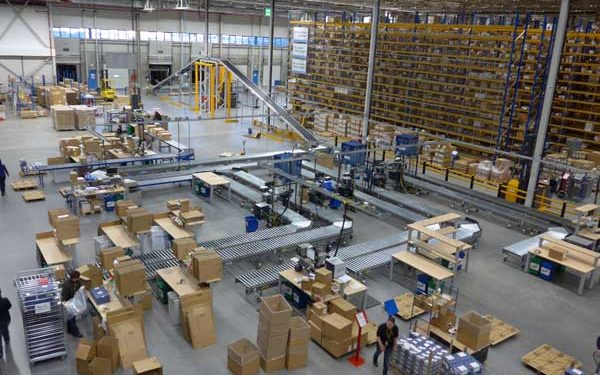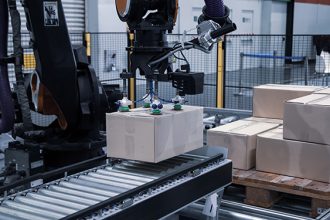Reconfigurable Conveyors for the Win

Many retailers have entered the omnichannel world at this point. The Targets, Wal-Marts, and Barnes and Nobles of the world no longer operate warehouses that service their brick-and-mortar stores only. Instead, as they try to compete with e-commerce giant Amazon and deliver more products directly to the consumer, they’ve fallen into the omnichannel universe.
However, serving both e-commerce and retail locations is difficult, and warehouses often struggle to transition from traditional to modern. To be successful requires a reevaluation of processes, people, and equipment. The best equipment for these multi-tasking facilities is the most flexible, and for many companies, that looks like reconfigurable, portable conveyors.
These plug-and-play conveyor options are meant to move around a warehouse, servicing multiple areas and types of operations. They can work as well in case picking as they can in shipping. Versatility is their middle name, and that’s just what omnichannel operations need on a daily basis.
A reconfigurable conveyor generally rests on casters, making moving to a new location easy. It will feature multiple sections that workers can remove, swap in and swap out as needed. Depending on your demand mix, you can add lines for packing and shipping, add packing tables, or do it all in reverse.
Picture a busy, seasonal retailer, like Home Depot. Spring is approaching, direct-to-consumer orders for lawn equipment are skyrocketing, and the warehouse is still set up for the majority of case picking. With a portable, reconfigurable conveyor, you can rapidly scale up your e-commerce shipping operations.
Or envision a general goods retailer with a pre-holiday surge in e-commerce orders. You can set up a double loop near the dock doors with more packing tables, allowing for improved processing in shipping. You could disconnect the standing conveyor where it curves into the loop, add in another 50 feet of conveyor, add on the loop, and process more orders at a rapid rate.
Most reconfigurable conveyors make the job easy with a 120-volt power source, allowing you to disconnect it, move it/add on to it, and plug it back in. When the seasonal surge is over, it’s just as easy to perform all of the above in reverse—you can move it to another area of need within the warehouse or store it away from operations for future use. You’ll need only your maintenance team to accomplish the swapping out, and you’re ready to go.
The different brands of reconfigurable conveyors come in different flavors, so shopping with qualified providers is essential to find your perfect application. Their sizes, lengths, and degree of curves will vary from one to the next. But they all share the flexible characteristics that portable, reconfigurable conveyors afford a warehouse working to keep up with today’s demands.
For more articles and podcasts about Conveyors and Sortation:
The Importance Of Digitization In Material Handling
Why You Should Consider Decentralized Networks
Podcast: CSS – HOW TO AUTOMATE FOR THOSE WHO HAVEN’T …
Electrical Motor Standard Differences
From Preventative To Predictive Maintenance Of Automation
Large Parcel Shipping Is Growing
5 Ways Robotics Improves Conveyor And Sortation Induction
For more information about the Conveyor and Sortation Solutions Industry Group, click here.



